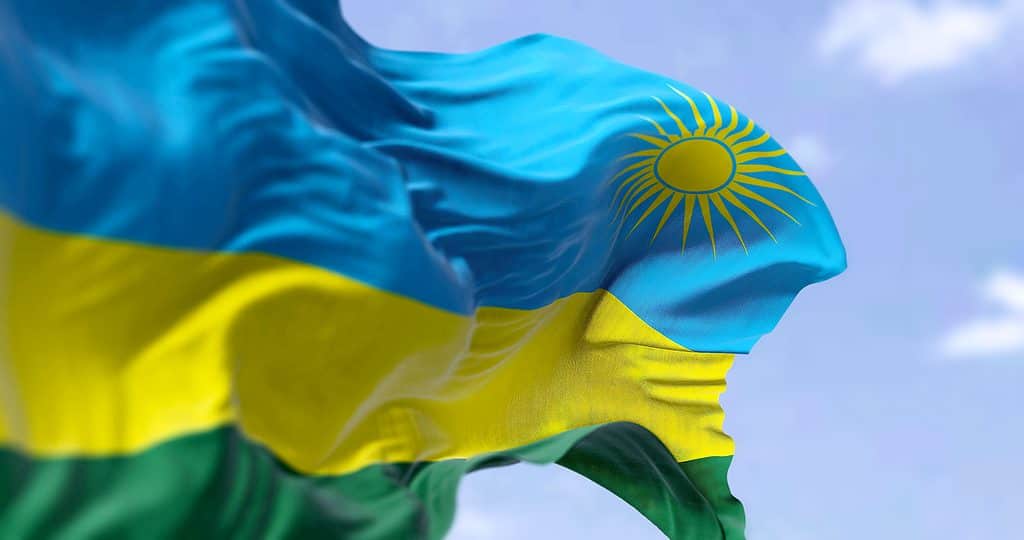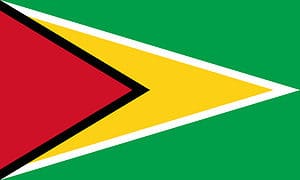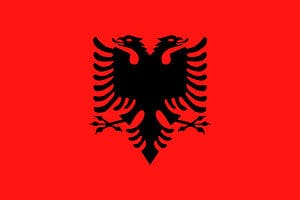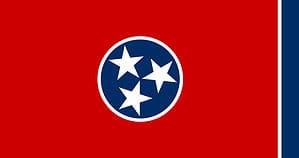All around the world flags are flown to represent country, state, or monarchy. They are visual symbols that are an easy way to recognize the place that they represent. However, flags are much more than an identifying symbol as in many cases they can depict a story — whether a tale of the country’s history or its people. This can be told through the colors, shapes, or even images used on the flag. The flag of Rwanda is one of many that is a tricolor, but what does it represent? Let’s find out!
About Rwanda
Rwanda is a landlocked country located in the Rift Valley region of Central Africa. It is often called the “land of the thousand hills” because of its highly elevated landscape. The country has a high altitude; even the lowest point sits at 3,117 feet above sea level. The highest point is Mount Karisimbi which peaks at 14,787 feet and is the highest mountain in the Virunga Mountains.
Rwanda has a temperate, tropical climate with two rainy and dry seasons yearly. With its unique geography and tropical climate, Rwanda is incredibly diverse. Although large parts of the country are now given over to agriculture, Rwanda has four national parks — Akagera, Gishwati Mukura, Nyungwe, and Volcanoes. These national parks are home to many different species of animals. These include endangered rhinos, mountain gorillas, and a population of lions reintroduced in 2015.
A Brief History of Rwanda
Evidence of early humans in Rwanda dates back to the Neolithic Period, around 10,000 years ago. Iron Age settlers and hunter-gatherers inhabited it for a long time, but by 1500 AD, several Bantu groups had migrated, including the Tutsi. By the 1700s, several kingdoms had been formed in the area, including the Kingdom of Rwanda, which a Tutsi monarch ruled.
In 1884, the area was annexed to Germany, and the country declared Rwanda part of German East Africa. German East Africa was a colony in the African Great Lakes area. It was comprised of the land that is now Burundi, Rwanda, and Tanzania.
Belgium invaded Rwanda and Burundi in 1916. Following Germany’s defeat in the war, Belgium began to rule both areas as a colonial territory called Ruanda-Urundi. This was first under the guidance of the League of Nations and then as a “Trust Territory” under the United Nations.
In 1959, the rising tensions between the Tutsi and Hutu groups led to the Rwandan Revolution. This led to Rwanda changing from a Tutsi monarchy under Belgian rule to an independent republic dominated by the Hutu. In 1962, Rwanda separated from Burundi and officially gained complete independence from Belgium. However, independence didn’t end Rwanda’s struggles. There continued widescale violence between the Tutsi and Hutu groups, eventually leading to Civil War in 1990 and the horrors of the 1994 genocide.
Former Flags of Rwanda

The current flag of Rwanda flag is a tricolor with blue, yellow, and green horizontal bands.
©rarrarorro/Shutterstock.com
Several flags have flown over Rwanda, and the different flags represent the country’s changing politics. The first flag to be flown over the Rwanda was the flag of the German East Africa Company. The German East Africa Company was founded in 1884 to begin trading in Africa. Its interests included mines, railways, plantations, and banking. However, it also brought about the formation of German East Africa. Its flag consisted of a black cross on a white field with a red square and five white stars in the canton.
Following World War I and the defeat of Germany, Rwanda came under Belgium’s rule as the colonial territory Ruanda-Urundi (later Rwanda-Burundi). However, it did not have its colonial flag, so the Belgium tricolor flag was flown.
After Rwanda’s independence from Belgium, it adopted a new flag in 1959, a red, green, and yellow tricolor with vertical bands. The colors used were the Pan-African colors which represent liberty and independence. This flag design lasted only two years until 1961, when it was modified to add a large, black “R” in the central yellow band. This was to distinguish it from the flag of Guinea, which was otherwise identical. Although the flag used the Pan-African colors and initially represented peace, it was eventually removed as the national flag as it had become associated with the 1994 Rwandan genocide. The current national flag took its place on October 25, 2001.
History and Symbolism of the Flag of Rwanda
Adopted in 2001, the current flag of Rwanda is one of the youngest flags in the world. The flag is a tricolor with blue, yellow, and green horizontal bands. The blue band is the widest of the three and features a yellow sun with 24 rays in the upper fly corner.
Following the decision to adopt a new national flag because of the predecessor’s association with genocide, the new design is intended to represent unity, heroism, peace, and respect. The blue band on the flag symbolizes peace and happiness. As this is the thickest band, it highlights the importance of these ideals. Also, the yellow band represents the country’s economic development, and the green represents hope. Finally, the yellow sun symbolizes enlightenment.
Another interpretation of the flag is that it represents the lush land of the country bathed in the warm yellow glow of the sun that sits high in the bright blue sky above.
Up Next
- Every Flag in the World: Photos, History, and More
- The Flag of Burundi: History, Meaning, and Symbolism
- The Flag of Eswatini: History, Meaning, and Symbolism
The photo featured at the top of this post is © Derek Brumby/Shutterstock.com
Thank you for reading! Have some feedback for us? Contact the AZ Animals editorial team.







